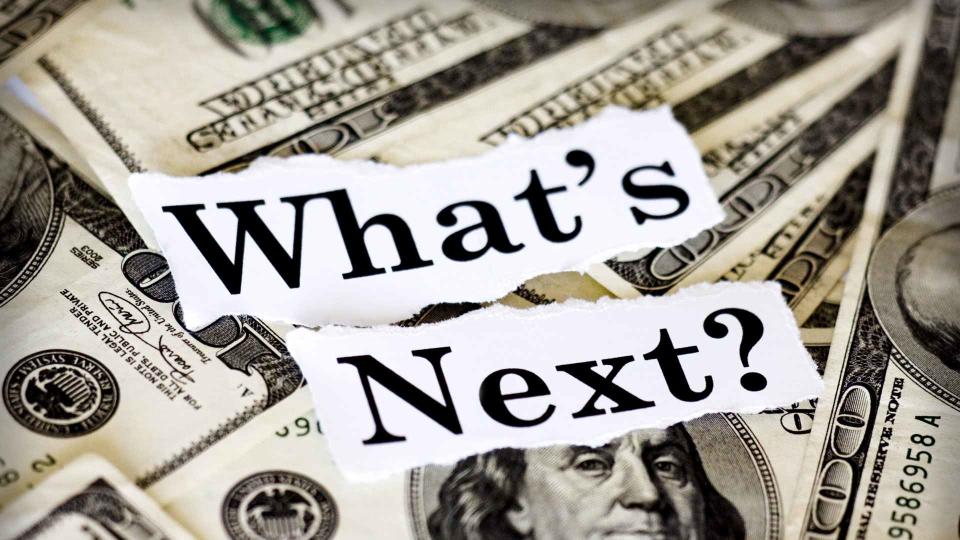The Economy Could Be in Store for a ‘No Landing’ Situation: What That Means for Your Money

While talks of a 2024 recession and a soft landing have been waning, discussion about a “no landing” economy have bubbled up. This comes against the backdrop of the Federal Reserve leaving its rates unchanged at its first Federal Open Market Committee (FOMC) meeting of the year, on January 31. While the move was widely anticipated, many experts were looking for signs of when, exactly, the Fed would start cutting rates — something that will probably occur later than many were hoping for.
Related: This Social Security Spousal Rule Is Officially Finished in 2024 — But These 3 Strategies Remain
Read: How To Get $340 a Year in Cash Back – for Things You Already Buy
Indeed, speaking at a post-meeting press conference, Fed Chairman Jerome Powell dampened expectations of a March cut rates.
“Based on the meeting today, I would tell you that I don’t think it’s likely that the committee will reach a level of confidence by the time of the March meeting to identify March as the time to do that. But that’s to be seen,” Powell said in a press conference.
Some experts believe this sets the scene for a so-called “no landing” economy.
Sponsored: Owe the IRS $10K or more? Schedule a FREE consultation to see if you qualify for tax relief.
What Is a “No Landing” Economy?
As CNBC reported, the U.S. economy grew at a much faster-than-expected 3.3% (versus the 2% forecast) pace in 2023’s fourth quarter, fueled by a solid job market and strong consumer spending. Yet, inflation-standing at 3.4% is still above the Fed’s 2% target, which could lead to a “no-landing scenario.”
“No landing means above-trend growth, and also above-trend inflation,” said Alejandra Grindal, Chief Economist at Ned Davis Research told CNBC, describing an economy that is “overheating.”
As Peter C. Earle, Senior Economist for the American Institute for Economic Research, further explained, the term “no landing” describes a set of conditions where a soft landing is attempted unsuccessfully yet doesn’t result in a recession.
“For example: if economic growth were to continue at or above trend, but inflation failed to return to the 2-2.25% annualized rate range, we could be viewed as in a no landing environment,” he said. “In that case, the Fed would be bound to manage policy rates more closely and we might see asset bubbles and labor imbalances, among other outcomes.”
“In simple terms, it’s like the economy is running too hot. This differs from a ‘soft landing,’ where the economy cools down gradually without causing a recession,” said Shawn Carpenter, Chairman, CEO, StockAlarm. He added that Grindal is “spot on” -as in a ‘no landing’ scenario, the economy goes into overdrive with rapid growth.
“That means more people are spending, businesses are investing like crazy, and the job market gets tight. But here’s the catch: all that extra demand for stuff makes prices shoot up, leading to above-average inflation,” he added.
No “No Landing”
Yet not everyone agrees with no landing premise, however. For instance, Moody’s Analytics economist Dante DeAntonio said he doesn’t view this as the most likely situation.
“Inflation has clearly moderated over the last 18 months, and still appears to be headed back to the Fed’s target later this year, despite strong economic growth in the second half of 2023,” said DeAntonio.
In turn, he said that this remains consistent with a “soft landing” scenario, where the Fed is able to return inflation back to its target without causing a recession.
In terms of what it means for consumers, DeAntonio added that as inflation has receded, we have re-entered a period of real wage growth — meaning that wage gains are outpacing inflation.
“This is a positive for household finances in the near-term,” he added.
In addition, he said that Moody’s expectation is for the Fed to begin cutting rates in May, at which point consumers will see some relief on interest rates across consumer lending products. He further argued that inflation should continue to moderate, and workers will see further increases in their real wages.
“That, combined with gradually easing interest rates this year, will help to ease the burden on household balance sheets,” he said. “However, interest rates will remain far higher than they were in the pre-pandemic period for the foreseeable future.”
What Does It Mean for Americans’ Wallets?
Michele Raneri, Vice President of U.S. Research and Consulting at TransUnion, explained that as the Fed has stated that their clear line in the sand is an inflation rate of below 2%, it will likely maintain the current level of elevated interest rates for a while longer, in hopes that the effects continue to work their way throughout the economy and ultimately drive that inflation rate further down.
“In the meantime, consumers will continue to pay higher prices due to still, although slightly elevated inflation, and will pay more for the credit that they do use due to these higher rates,” said Raneri. She added, however, that it’s important that ultimately both the inflation rate and the interest rate come down because if only the interest rate drops, but inflation remains high, consumers will not fully financially benefit in the long run.
In the meantime, Raneri said that now is the time for consumers to begin working on their credit because, while interest rates remain at a higher level now, there are signals that these rates will be lowered later in the year.
Learn: Student Loan Forgiveness ‘Buyback’ Program Could Offer More Relief to Borrowers — Do You Qualify?
“Ensuring their credit is in its best possible standing is important for those consumers who seek to take advantage of those lower interest rates when they do in fact arrive,” she added.
This article originally appeared on GOBankingRates.com: The Economy Could Be in Store for a ‘No Landing’ Situation: What That Means for Your Money

 Yahoo Finance
Yahoo Finance 